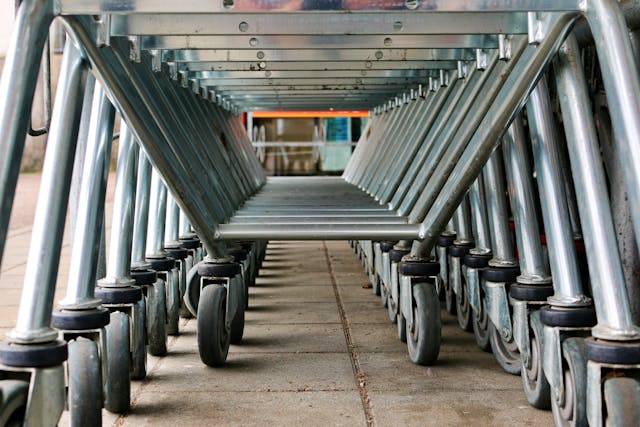What Are Caster Wheels?
Caster wheels are essential in everyday life and are attached to various objects like shopping carts and industrial machinery. These wheel assemblies are designed to make heavy loads mobile with less effort than traditional lifting or dragging. They boost efficiency and safety by reducing physical toll on users and flooring surfaces. The core value of a caster lies in its ability to roll smoothly and support substantial weight, adapting to different terrains and transport requirements.
Early caster wheel designs were simple, but advancements in engineering and materials science mean today’s varieties can be purpose-built for any challenge. Industrial users often rely on products like the phenolic wheel, renowned for its high load capacity, low rolling resistance, and resistance to oil, grease, and most chemicals. This versatility makes phenolic wheels a top choice for dynamic work environments where reliability and performance are non-negotiable. The proper caster streamlines workflow and significantly reduces the odds of workplace strain and injury by improving mobility and decreasing manual handling.
Different Types of Casters and Their Uses
Casters are divided into rigid and swivel categories, with rigid casters being fixed to move only forward and backward, providing straight-line stability. Swivel casters can rotate 360 degrees, which is ideal for tight spaces or crowded environments like hospitals or retail aisles. Specialized casters offer tailored functionality for unique applications, such as locking casters for safety in shifting or vibration-prone environments, medical-grade casters for noise reduction and vibration absorption, shock-absorbing casters for protection against bumps and jolts, and heat-resistant models for industrial environments. This adaptability ensures a caster configuration is available to increase productivity, prevent damage, and enhance user comfort, regardless of the challenge.
Material Considerations for Casters
The choice of caster material is crucial for performance, safety, and maintenance. Polyurethane wheels are ideal for schools, offices, and hospitals due to their protection, noise dampening, and wear resistance. Rubber wheels offer grip and shock absorption for rough or uneven floors. Nylon and plastic casters are suitable for lighter applications requiring chemical resistance. Steel or iron wheels are ideal for heavy-duty scenarios but may damage delicate flooring. When deciding, environmental factors like moisture, temperature, and chemical exposure should be considered. A thoughtful choice prevents premature failure, extends product life, and ensures smooth facility operation.
Common Industries Using Caster Wheels
- Healthcare: Precision and cleanliness are critical in hospital settings. Medical carts and beds require casters that roll quietly and resist bacteria. The ease of movement helps staff transport patients and equipment quickly and comfortably.
- Food Service: Restaurants, commercial kitchens, and bakeries use casters to withstand moisture, cleaning chemicals, and temperature fluctuations. This ensures food safety while keeping operations efficient during peak hours.
- Manufacturing: Assembly lines, packing stations, and transport carts are outfitted with casters built to bear significant weight and roll over concrete or metal floors without deteriorating. This movement is central to modern just-in-time manufacturing processes.
- Retail: Shopping carts, display racks, and stockroom shelving depend on maneuverable casters for fast, smooth movement. Retailers prioritize caster designs that reduce customer effort and endure daily wear and tear in high-traffic environments.
Every sector has its own set of requirements—medical casters focus on hygiene and silence, industrial casters on strength and resilience, and retail casters on smoothness and ease. Selecting the right caster can bring tangible gains in efficiency, safety, and customer satisfaction.
How to Select the Right Caster for Your Project
- Estimate total load: Begin by calculating the maximum weight your equipment will carry at any time. Divide this number by the number of casters on the item to determine the minimum load capacity required for each wheel. If in doubt, allow a buffer to ensure safety and reduce strain on the casters.
- Consider flooring and terrain: Soft wheels, such as rubber or polyurethane, prevent scratches and marks on sensitive flooring but can struggle outdoors. Harder wheels, such as nylon or steel, offer smooth rolling over rough ground but may be taxing on tile and laminate floors.
- Maneuverability needs: Swivel casters are the answer for agile movement and frequent changes in direction, while rigid casters bring extra stability to larger, heavier loads. Many users choose a combination of two swivels and two rigid casters to blend maneuverability and control.
- Environmental factors: Exposure to water, chemicals, or fluctuating temperatures can quickly deteriorate unsuitable casters. Seek out specialized materials and seals to cope with these stresses, preventing rust, swelling, or warping over time.
Reviewing product guides and expert advice, such as Thomasnet’s extensive overview, can be invaluable for narrowing down the options. A well-matched caster is an investment in efficiency and safety that pays dividends as equipment stays mobile and stable.
Installation Tips for Caster Wheels
To ensure the effectiveness of a caster, follow manufacturer-recommended mounting methods and start with the equipment on a flat surface. Use a level to ensure all mounting points are at the same height, and clean and remove debris or burrs to secure the fit. Tighten bolts evenly, working in pairs or triangles, but avoid overtightening and stripping the threads. After assembly, verify all casters rotate freely and the load is balanced. Careful installation ensures smooth operation, prolongs caster lifespan, and minimizes future repairs.
Maintenance Best Practices
A scheduled maintenance strategy for casters is crucial to maximize performance and prevent costly downtime. Regularly inspecting wheels for flat spots, chips, debris, or cracks, as well as swivel bearings for grit or corrosion, is essential. Retighten all fasteners, especially after heavy use or impacts, and clean wheels and axles with mild detergent. Mark and replace casters that show significant wear or fail to roll and swivel easily. This proactive maintenance extends the lifespan of casters and reduces workplace injuries related to malfunctioning wheels.
Caster Wheels and Workplace Safety
Safety is crucial when using rolling equipment in the workplace, as poorly functioning casters can cause items to tip over, stick, or move unpredictably, exposing users to strain and injury. Selecting sized and rated casters for the application is essential, as undersized or worn wheels can increase accident risk. Ergonomics experts recommend casters that minimize push/pull force and match the load and environment. Regular inspections and maintenance are crucial for employee well-being and operational continuity.
Future Trends in Casting Technology
The caster is adapting to automation, sustainability, and workplace safety trends. New materials like reinforced composites and recycled plastics combine old and new qualities while reducing environmental impact. Innovative features like built-in sensors and RFID tags enable asset tracking and predictive maintenance, leading to more efficient operations. Manufacturers also focus on ergonomics, producing wheels with lower rolling resistance and improved shock absorption for better user comfort.



